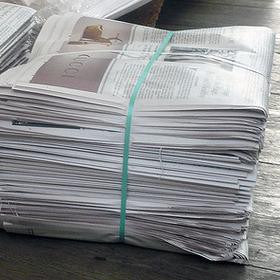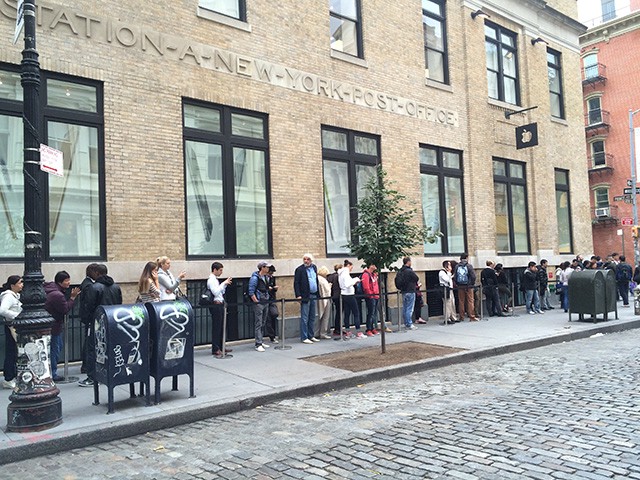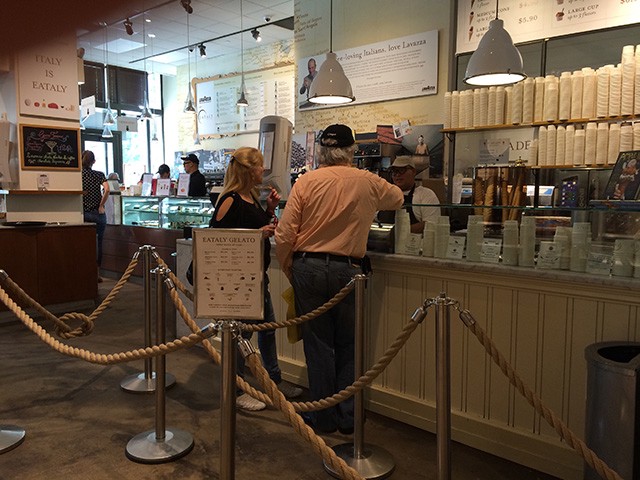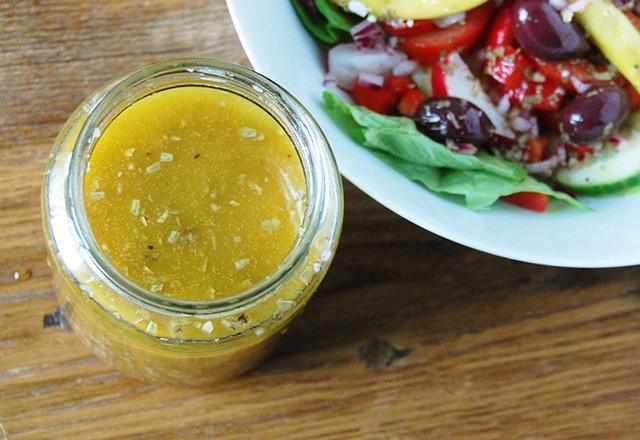The Lessons of Vice

A post-mortem on pre-mega-expansion Vice, by Alexandra Molotkow:
The magazine was a point of intersection for a number of subcultures that started balling together around the turn of the century. It’s hard to say what this scene was about, exactly: clothing-wise, Vice “style” was defined negatively — the Don’ts were always funnier than the Do’s — so it was more about what you couldn’t wear (dreadlocks, sandals, pubes) than what you should. Musically, it was far-flung, though artists like Andrew WK and the Yeah Yeah Yeahs were staples, and I remember it as a leading champion of electroclash. Coke was the drug of choice, but in drugs as in all things, Vice was omnivorous. It was ahead of its time that way; the end of genre boundaries and style tribes — along with a new emphasis on sensibility over taste — is probably the most distinctive attribute of “youth culture” after the Millennium (and part of what makes a “hipster” so hard to identify).
That this piece is thorough and lucid and yet still leaves you disoriented is a testament to how inseparable the old Vice product was from its burbling sensibility; now but especially years from now, people will not remember issues of the magazine, or stories, so much as periods and places in which Vice just felt very present. The new Vice is conspicuously substantial, its output easier to point to, categorize, and put on a timeline. The most enduring product that old Vice produced was an enormous and marketable demographic. It was assembled from countless odd subcultures; its glue was insecurity (and maybe music and maybe drugs, a little). Apart, they were slippery and defied naming. Together they formed a cohort, fell into line, and became pitchable.
Playing the 'Twin Peaks' Revival Odds
Normally, when one learns of the revival of a beloved intellectual property from prior decades, the only appropriate thing to feel in response is absolute dread. However, considering that the last half of the second season of Twin Peaks — except for the last episode — was a smoking wreck (and, according to most people, the movie was not much better!), the odds that the Showtime revival of Twin Peaks, coming in 2016, will degrade the series even further are only slightly higher than the odds that David Lynch and Mark Frost could in fact improve upon its standing. (Sylvester Stallone is a strange but true case study in this fact: His recent additions to both the Rocky and Rambo franchises were much better than the movies that originally capped them.)
As it stands, there is, roughly speaking, a twenty percent chance that the new limited series will elevate Twin Peaks; a forty percent chance that it will make it slightly worse; a thirty percent chance that it will stay the same; and a ten percent chance that it will truly and completely ruin it forever. I would take those odds, I think.
We will update these odds as the story progresses.
There Was New York
There Was New York
“Now the energy is different: the underground has almost entirely disappeared. (You hope there are still young artists in Washington Heights, in the Barrio, or Stuyvesant Town, but how much longer can they hang on?) A twisted kind of energy radiates instead off the soulcycling mothers and marathon-running octogenarians, the entertainment lawyers glued to their iPhones and the moguls building five “individualized” condo townhouses where once there was a hospital.
It’s not a pretty energy, but it still runs what’s left of the show. I contribute to it. I ride a stationary bike like the rest of them. And then I despair when Shakespeare and Co. closes in favor of another Foot Locker. There’s no way to be in good faith on this island anymore. You have to crush so many things with your mind vise just to get through the day.” — Zadie Smith looks out the window.
Cool Words Properly Historicized
Even the seemingly up-to-the-minute “bae,” a word that means babe or baby and is so new that most of its written use is in personal communications, has a print trail back to the early 2000s, and is probably a descendant of the reduplicative nickname Bae Bae, a rendering of “baby,” which shows up in print in the 1990s. In some cases, bae is older than the people using it. (It also has its own spurious acronymic etymology, “before anyone else.”)
I am convinced that the favorite pastime of linguists, who are, by definition, Olds, is showing up to point out that they knew about words like “bae” before everybody else — even the patient zero of a given piece of slang! — forever perpetuating their sense of cultural omniscience, as if, without their permission, “swag” wouldn’t merely be wrong, but it would never exist in the first place. (via)
New York City, October 2, 2014

★ The chill was nothing serious, fine for the short run to a late dropoff at school. All day, in fact, it would be comfortable for walking in. Even so, the gray was heavy and dispiriting. Around 1, sun started coming through the windows, and blue and white took over a substantial patch of sky. A life model shrugged her outer shirt off her shoulder in the garden as a drawing class ringed her, clutching their pads. Soon enough, though, the dimness closed in again, heavy and final, as if the brightness had never been.
The Ten-Year Anniversary of the Time My Wedding Announcement Was Not Accepted by the Paper of Record
by Dan Shanoff

Margery Miller and Dan Shanoff
Margery Ilana Miller and Daniel Shanoff are to be married this evening1 at The Plantation at Amelia Island, Florida. Rabbi David Kaiman is to officiate.2
1. Ten years ago today. You see: This notice was submitted to the New York Times for inclusion in its Sunday Styles “Weddings” sub-section for October 3, 2004. After not hearing anything for weeks/months leading up to the scheduled day, I opened the paper that morning earnestly hoping for the best, but instead receiving a wedding present of inexplicable rejection, which is clearly an off-registry gift.
2. So nice!
Mrs. Shanoff, 30, is a third-year law student at Fordham, where she is a Senior Notes and Articles Editor of the Law Review. She will begin working next fall as an associate at the law firm of Davis, Polk and Wardwell3 in New York.4 She graduated magna cum laude from Harvard.
3. After clerking for a judge (a NYT Wedding staple detail), she eventually left the firm for a smaller one, then left that firm for a quasi-governmental regulatory group. Still a lawyer, though.
4. If we didn’t live in New York at the time we were getting married, I wouldn’t have even bothered submitting the announcement. We eventually moved out, as so many couples who make the Weddings cut inevitably do, because of kids, exhaustion or a combination.
The bride’s parents, Suzy and Gary Miller, live in Gainesville, Florida.5 Her father is co-founder and executive vice-president of research and development of Exactech, a medical-devices company in Gainesville. Her mother, a retired teacher, is a volunteer at the Harn Museum of Art and Congregation B’Nai Israel in Gainesville.
5. Go Gators.
Mr. Shanoff, who is known as Dan, writes the “Daily Quickie,” a column for ESPN.com.6 He graduated from Northwestern University and received an MBA from Harvard Business School.7
6. That ended in 2006, followed by eponymous blogging, consulting, “writing that screenplay” (optioned, never made), joining a start-up, more consulting, launching an antecedent to the hot news start-up “Syria Deeply” all about Tim Tebow, then founding my startup, which was later absorbed by a big media company, where I still work today. But at the time I submitted the announcement, I was confident that “ESPN columnist” had enough media-ish cachet that it had to help.
7. At this point, we’ve cleared at least double-digits on Katie Baker’s “NUPTIALS” NYT Wedding announcement scorecard, just the “U” section. I’m not saying that to boast; I’m saying that to help me discern what might have disqualified our announcement from publication. (It was Northwestern, wasn’t it? Some Styles editor clearly went to Columbia.)
The bridegroom, 31, is a son of Carolyn and Barry Shanoff of Bethesda, Maryland.8 His mother directs consumer and business education at the Federal Trade Commission.9 His father is a partner at Knopf & Brown, a law firm in Rockville, Maryland.10
8. Come home, Kevin Durant!
9. Retired this past Tuesday!
10. It might have ended here. It could’ve ended here. Many Weddings entries present the just-the-facts basics and that would have been enough. But what’s the harm in a little backstory? It’s not like I was asking for the “Lois Smith Brady treatment.” (That said: LSB would have had a great time at our wedding — we passed around these ridiculously good mini lamb chops and had an outrageously talented band and our first dance was to Stevie Wonder’s lovely “I Believe,” although in retrospect, I think I would have cut off the song halfway only to have the band jump into “Crazy In Love,” ending with me standing with the band doing a surprisingly effective and not-at-all-awkward job with the Jay parts while Margery played Bey and, on the extra-large dance floor, Lois Smith Brady was pulled into some kind of hustle step by my father, which would have clearly been the Vows lead.)
In the summer of 2001, shortly after a first date with Mrs. Shanoff arranged by a mutual friend,11 Mr. Shanoff went abroad for a three-week vacation in Europe. After a week of receiving his enthusiastic email reports, Mrs. Shanoff spontaneously offered to join him in northwest Italy, a proposal he eagerly accepted.
11. That’s a euphemism for “blind date.” All I can say is that your mutual friend better have a solid existing track record. It’s like Uber for Shidduchs: If their fix-up success wouldn’t rate at least 4.5 out of 5 stars from the previous couples involved, skip the match-making and stick with Netflix that night.
“How could I say no to such a bold, romantic gesture?” he explained.12
12. As recounted in The Awl, 12/30/09. Needless to say, the quote-crux of the story — “How cheap is cheap?” — didn’t make the version submitted to the Times. Although in retrospect, maybe if it had been included, our submission would have found more favor. Probably not.
The pair enjoyed five days touring Venice and Cinque Terre. “Such an intense experience was like 100 dates,” Mr. Shanoff remembered.
“It was Italy,” Mrs. Shanoff said. “Of course we fell in love.”13
13. Seriously, Margery is fearless and endearing and kind and full of joy, all of which anyone can tell from that single quote, let alone being married to her for 10 years. How did they turn down this listing?! (This final venting represents my closure. [Ed note: ARE YOU SURE])
When they returned stateside, they maintained a “mid-distance” relationship between Boston and New York during Mr. Shanoff’s final year of business school, before he moved back to Manhattan after graduating.14
14. We left Manhattan a year later, Brooklyn a few years after that with two kids, and now we live in the DC suburbs with three, happily still married (still happily married?) and celebrating our 10th anniversary tonight in the most romantic way possible — Yom Kippur services. (Ask any Jewish person: “Kol Nidre” is the least seductive slow jam ever.) In the end, I wasn’t looking for a “Vows” column — just an overly public, admittedly superficial, Times-stamped recognition of the biggest moment of our lives. It clearly nagged at me enough over the past decade to finally see it published today. You win, Lois Smith Brady.
Dan Shanoff writes for USA Today Sports. Photo by Michael Mandiberg.
'Luxury' Redefined
“What used to be a 650-square-foot studio can now be a very well-laid-out one-bedroom,” he said. For new condominiums like 50 Clinton Street, a project on the Lower East Side where WD-50, the restaurant run by the chef Wylie Dufresne, now stands, he said, “I’m dubbing a new term, ‘cool luxury,’ where the building is super design-focused, but it doesn’t use the most high-end finishes or appliances.”
Real estate developers may be, outside of teens, our most precious source of new forms of language.
This Week in Lines: Persistence
by Jake Gallagher

9:08 AM Thursday October 2 — iPhone 6 Line at the SoHo Apple Store
Location: Still Greene and Prince
Length: Still sixty-four people
Weather: Still 63 and Partly Cloudy
Crowd: Still ninety-nine percent professional line-sitters
Mood: Still undercharged
Wait time: Still several hours
Lingering question: Still?

7:28 AM Friday, October 3rd — Cronut Line at Dominique Ansel Bakery
Location: Spring and Thompson
Length: Fifty-eight fad-obsessed foodies
Weather: 61 and sunny
Crowd: Enough leggings, hoodies, and Starbucks cups to confuse this line with the first day of PSL
Mood: Saccharine
Wait time: Thirty-two minutes
Lingering question: What is the Cronut-to-Instagram-Like exchange rate these days?

11:57 AM Friday, October 3rd — Gelato line at Eataly
Location: Fifth Avenue and 23rd Street
Length: Two scoops
Weather: 70 and partly sunny
Crowd: A couple that will not wait until noon for that first cone of the day
Mood: Impatient
Wait time: None
Lingering question: Why am I not eating gelato right now?
Jake Gallagher is a writer for A Continuous Lean and other places.
The Saddest Thing You Can Buy in a Grocery Store Is Salad Dressing

The most outrageous area of the grocery store is not the frozen section, nor the canned section, nor even the gross pre-made foods section. I am happy to partake of certain kinds of frozen or canned produce in the wintertime (they are usually better than fresh, when out of season), and I have been known to buy whole rotisserie chickens, theoretically to turn the carcass into stock, but really to gorge on heavily salted flesh for two days straight. No, the most frustrating and worthless aisle, the one from which no self-respecting adult should ever purchase anything, under absolutely any circumstances, is the salad dressing aisle.
There is no greater substantiation of the international reputation of American home cooking than pre-bottled salad dressing. A simple vinaigrette, like a classic balsamic, has like three ingredients — not one of which goes bad — and a superior version can be made at home for a small fraction of the price in about fifteen seconds. To save those fifteen seconds, Americans will sacrifice money, flavor, and, frankly, our dignity, and buy pre-made garbage. This is not always our fault! Sometimes we have been raised on these dressings, and sometimes the tv chefs can make them seem difficult. Whisking? Drizzling a thin stream of oil to emulsify? Lightly macerating shallots? This seems complicated, and unwelcome, given that this dressing is usually going to go on a salad, a dish many of us only grudgingly eat. But no, friends: Salad dressing can be extraordinary.
I love salad dressing, and vinaigrettes in particular. Creamy dressings, like ranch and blue cheese, are immature, inferior condiments; they mask, rather than accentuate, the flavors of vegetables, which are often more subtle and delicate than the big dumb idiot flavors of meats. Use blue cheese dressing on buffalo wings, not on vegetables. A vinaigrette, though, is a beautiful thing. I use them on salads, sure, but also on pretty much everything else: on a stir-fry, on a platter of roasted vegetables, on a sandwich, on oysters or fish. The vinaigrette — at its core, nothing more than an emulsion (a homogeneous mixture) of oil and vinegar — is fantastically flexible; I have yet to find a cuisine that a vinaigrette can’t encapsulate.
Making vinaigrettes is a great introduction to cooking. New cooks often aren’t quite sure how to season — not because they don’t understand the techniques, but because they aren’t sure how to taste and adjust. Something like a soup, which may have many many ingredients, can be very hard to season for the inexperienced cook; the knack of knowing when a soup needs butter, or salt, or dried herbs, or stock, is something that comes with time and practice. But a vinaigrette never has more than a few ingredients, and can thus serve as a cook’s version of dissecting a worm: It’s all pretty simple in there.
The key to a great vinaigrette is to capture several different flavors at once: something sour, something sweet, something savory, something fatty, and usually something spicy. An inexperienced cook can play around, adding more salt, more oil, more vinegar, more spice, more whatever, tasting and re-tasting until it seems right. This is how you become a good cook, not by reading things; cookbooks are dumb, this column is dumb, I am personally very dumb.
The most important tool for making vinaigrettes is a small glass container with a lid, which I got in a large collection of glass containers just like this one. When buying these, make sure to get glass — plastic is definitely going to kill us all one of these days — and make sure it says “oven safe” on it. These tupperware-type glass containers are MAGIC. I use the big ones for baking bread, the medium-sized ones for quick-pickling, and the little ones are my favorite; I use them for vinaigrettes. Here are some recipes.
Uncle Dan’s Spicy Southwest Vinaigrette: Take your small tupperware, fill it up about a third of the way with olive oil or a neutral oil like grapeseed, and sprinkle in a bunch of ground cumin, ground turmeric, and the chile powder of your choice, at a ratio of roughly 2:4:1. (Not chili powder, that garbage that comes in packets that’s designed for lousy versions the dish called chili: I’m talking about some kind of dried chile that’s been ground into a powder. I use chile de arbol powder from New York’s best spice shop, Kalustyan’s.) Put the lid on and shake loosely to combine, then remove the lid and place your glass tupperware right on the burner. Yeah, right on it! Turn the burner on the lowest setting and stand over it; it will burn quickly if you’re not careful. [Ed. note: please see the update below.] Wait until little bubbles start forming at the edges, and notice that there is an OUTRAGEOUSLY GOOD aroma emanating from this tiny tupperware. As soon as it smells incredible, which should only take a minute or two, turn the heat off and walk away. It has to cool down before you can add any other ingredients, otherwise it will angrily spit hot oil at you. Once cool, add about a half to three quarters as much apple cider vinegar as oil, and a squeeze of honey. To mix, don’t bother stirring: just put the lid back on (SECURELY), and shake vigorously, which will emulsify better than any whisk (properly trained chefs will tell you to blend everything besides the oil, then slowly dribble in the oil while whisking. This is boring. If you’re going to serve it right away, fuck it, just shake it all up). Too oily? Add more vinegar. Too sour? Add more honey. When it’s done it should have a bunch of flavors all balanced just right: smoky, spicy, savory, sweet, sour. I like to use this vinaigrette on a slaw: Take a big bowl, dump a bag of broccoli slaw in (cabbage works well too, but I like broccoli slaw more; it can be found at Trader Joe’s), a bunch of raw corn (fresh in summer, canned all other times), black beans, feta cheese, and either fresh cilantro or cilantro pesto. Let sit overnight if possible for all the flavors to get friendly.
Variations: Want something a bit more autumnal? Do the same thing as the above, but replace the southwest spices with pumpkin-pie spices: cinnamon, clove, nutmeg. Use on a salad of raw apples, roasted squash, beet greens, and candied walnuts (which you can make, but don’t bother if you live near a Trader Joe’s). Or something vaguely Indian? Replace spices with a madras curry mix and use lemon juice instead of cider vinegar. Use it over any ordinary green salad or over roasted sweet potatoes and cauliflower.
Thai and Vietnamese flavors take very well to vinaigrettes as well. Here’s one I use for cold noodle salads a lot: Take a frozen knob of ginger, grate into your little glass tupperware. Add in rice wine vinegar, a little soy sauce, a little sambal oelek (chili-garlic paste), a little fish sauce, some brown sugar, some neutral oil (grapeseed, but use less than you would with western vinaigrettes), and a little bit of peanut butter. Pop on the lid and shake vigorously. Serve with cold noodles, raw or pickled vegetables (cucumber, daikon or other radish, carrot, bean sprouts), some cubed tofu or chicken, crushed peanuts, and cilantro. Alternately, toss with the non-noodle ingredients and serve in a hoagie roll for a sort of mutant Thai banh mi.
Variations: For a more Japanese take, try a miso vinaigrette. Combine a spoon of miso (I like white best for this one), rice vinegar, a couple drops sesame oil, sambal oelek, soy sauce, and a neutral oil, and shake vigorously. Serve over any crisp vegetables, either raw or lightly stir-fried.
Assuming you have some pesto in your freezer, which you should, how about an herb vinaigrette? Toss any kind of pesto into tupperware with a little extra olive oil, lemon juice, and maybe some crushed red pepper flakes and/or honey. Any kind of pesto vinaigrette would be great over warm boiled potatoes, as sort of a quick fancy potato salad, but a sweet-ish basil pesto vinaigrette is especially great over a fruit-heavy salad of greens (I like purslane for this), halved grapes, and pickled shallots.
Vinaigrettes might seem intimidating or not worth the trouble, but, in order: they are not, and they are. They are an introduction to sauce-making, a palette to explore the arts of balancing flavor, and pretty much any dish can be improved with the addition of one. The basic combination of fat and sour can be expanded to so much more, to a sauce that hits every single flavor receptor on your tongue — and it can be as simple or as complicated as you want. Never buy vinaigrette. Always make it.
Important Safety Update: So, there’s been some confusion/misunderstanding about the glass-on-the-stovetop thing, which I could have been more clear about. I did some research, and found some reports of oven-safe Pyrex glassware that’s broken when used on the stovetop, and general advice seems to be not to use it for this purpose.
Pyrex is is still a type of glass, and thus does not take well to abrupt changes in temperature; to heat up a Pyrex container and then rapidly cool it down (by, say, running cold water over it, or putting it in the freezer) is a guaranteed way to have it immediately break into many pieces. My method for this vinaigrette involves very low heat for a very brief time; the burner is on low and for no more than a minute or two. I’ve made this vinaigrette in this way many many times with no adverse effects. But jostling the glass or encouraging the temperature to quickly change could result in broken glass, which would be obviously pretty dangerous, and I should have been more clear about how this stuff works.
Some alternatives: I wouldn’t recommend microwaving, even though Pyrex is typically microwave-safe; it’s very easy to overcook in a microwave, since you can’t really see what’s happening in there, and if your Pyrex has a crack in it, it could easily burst. A safer and more common solution, which I bypassed because I hate doing extra dishes, would be to just use a regular pan. Heat up the oil on low for a couple minutes, stir in the spices, and toast until fragrant, then scrape the spiced oil into a container with a lid to complete the vinaigrette. I, Dan Nosowitz, apologize for the lack of clarification on what can happen to glass with abrupt changes in temperature. You should probably just use a regular pan.
Photo by Nicole Susanne
A Poem by John Gallaher
by Mark Bibbins, Editor
In a Landscape: XXXVIII
Wherever I get to, someone’s there. It’s
a busy place, wherever we are. Oppen calls it the “Shipwreck
of the singular,” if I’m reading him correctly,
though the day after “everything happening
at once” which was in the air back then,
we find ourselves making the same breakfast as before,
and the windows still work in the old way. There’s always
this lag-time between the first serious relationship I was in,
and every relationship I’ve ever been in,
with all our faces layering over the top of ourselves,
a love that is hopeless and waiting at your door. Winnie Cooper,
where are you now? Right?
We could ask ourselves such questions with impunity
in the past, but now, as information is cheap, these things
usually get answered within seconds, complete
with a picture surrounded by balloons and favorite inspirational
kitten. And when they don’t get answered? Even now
things have a nasty habit of disappearing. The high school
I went to, I just found out recently, no longer
exists. The building is there on Wolf Hill Road,
but it’s now, I think, called Saint Anthony’s. So exits
Holy Family. I suddenly feel a sense of loss,
even though I’ve been to none of the reunions.
You’re right, you know, when you’re seventeen. You’re right
about it all, as I remember hearing “Powderfinger” for the first time
in the cafeteria, 1980, and “Rock Lobster”
at all the dances in that same cafeteria. But I hated
dances. I dislike large public gatherings of any sort. All these faces
looking around. The mysterious needs and desires — the
unknowability. How easy it is to criticize each other. I can
see them now in their purity, their unfettered beauty,
saying here he is, “thinking” again . . . and all these thoughts
seem so minor afterward. Where’s the reach,
the achievement. Maybe it’s better for both of us
this way. No, it’s not you, it’s me. Maybe we can still
be friends. There’s a company of wolves at the door,
asking for you. Should I show them in?
In a Landscape is John Gallaher’s most recent collection, available from BOA Editions.
You will find more poems here. You may contact the editor at poems@theawl.com.
